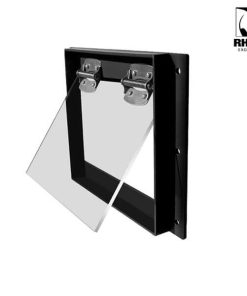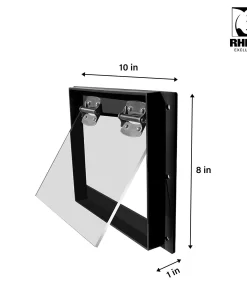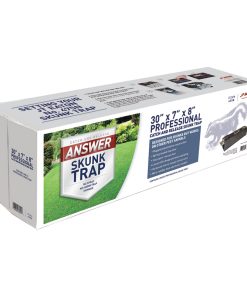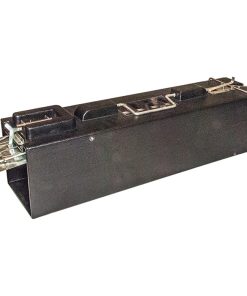Skunk Control

Skunks, known for their distinctive odor, exhibit a mild temperament. They are primarily active at night and typically resort to self-defense only when they feel threatened. Occasional skunk sightings in a neighborhood shouldn’t raise alarm. Since skunks are nomadic creatures, most worries about them taking refuge under sheds, porches, or outbuildings tend to resolve naturally: skunks simply relocate.
To minimize conflicts, consider altering your home’s surroundings to avoid attracting skunks in the first place.
If a skunk finds its way into your house, garage, or other structure, stay calm, close all but one outside door, and let the animal find its own way out. If necessary, you can slowly encourage the skunk to move in a preferred direction while holding a large towel, or a large piece of plastic or cardboard in front of you. If the skunk appears agitated, retreat immediately.
If a skunk has taken up residency in a den, try and be patient. Especially with a mother skunk.
Your first option is to do nothing at all. Skunks typically live in dens for short periods. Skunk babies are independent by the end of summer, when they leave the den and disperse from their family group. If you can wait until the babies are grown and/or have left, you can then close off the access point to prevent other animals from using the den in the future.
If you have a skunk that has taken up residency on your property, you may be able to use light or smell to get the skunk to move on. All harassment techniques should be placed as close as possible to the den entrance, so the mother skunk can’t ignore them when she comes and goes.
Humane harassment options:
Light-
Place a bright light outside the den entrance. Make sure it’s fire-safe. Skunks are nocturnal, and don’t like bright lights in their homes.
Smell-
Soak some rags in Apple Cider Vinegar or ammonia, and put them in a plastic bag. Poke holes in the bag to let the smell escape, and hang it next to the den entrance.
Keep all of the above going for at least 3 days and 3 nights. You’ve got to be persistent to convince the skunk to leave.
When you think the skunk is gone, make sure with a paper test. Stuff the entrance with balled up newspaper. Wait another 3 days and nights. If the paper is still in place, the skunk(s) are probably gone.
Skunks reproduce between April and September, so if you find one under your deck during that time you should assume it has babies under there with it. Skunk babies take about 8 weeks to be old enough to leave their den, so if you can handle waiting them out, they’ll likely be out of your yard within 2 months.
If you know where the skunk has its burrow, you can invest in a one-way door excluder. One-way doors are a good option between September and December, when tiny baby skunks are unlikely.
R108 Rhino Excluders® Raccoon One Way Door is a good option for dealing with skunks under a deck.
Exclusion Products
If all efforts to dissuade problem skunks fail, you may feel the need to trap the animals. Trapping skunks should be a last resort. Live traps, baited with cat food or canned sardines, are an option.




